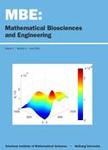版权所有:内蒙古大学图书馆 技术提供:维普资讯• 智图
内蒙古自治区呼和浩特市赛罕区大学西街235号 邮编: 010021

作者机构:Faculty of Information Technology and Bionics Pázmány Péter Catholic University Práter u. 50/A BudapestH-1083 Hungary Systems and Control Laboratory HUN-REN Institute for Computer Science and Control Kende u. 13-17 BudapestH-1111 Hungary
出 版 物:《Mathematical Biosciences and Engineering》 (Math. Biosci. Eng.)
年 卷 期:2025年第22卷第1期
页 面:109-137页
核心收录:
学科分类:0808[工学-电气工程] 0809[工学-电子科学与技术(可授工学、理学学位)] 07[理学] 0811[工学-控制科学与工程] 0701[理学-数学] 070101[理学-基础数学]
基 金:This research was partially supported by the Hungarian National Laboratory of Health Security (RRF-2.3.1-21-2022-00006) and the Post-COVID-2022 grant of the Hungarian Academy of Sciences. B. Cs. acknowledges the support of the \u00DANKP-23-3-II-PPKE-10 New National Excellence Program and the EKOP-24-3-II-PPKE-135 University Research Fellowships of the Ministry for Culture and Innovation from the source of the National Research Development and Innovation Fund (NKFIH). G. Sz. acknowledges the support of the grant NKFIH-OTKA 145934. The authors thank the anonymous Reviewers for their constructive comments and suggestions. The authors acknowledge the assistance of Kiley Kesterson for their careful and meticulous proofreading of the manuscript
摘 要:It has been clearly demonstrated over the past years that control theory can provide an efficient framework for the solution of several complex tasks in epidemiology. In this paper, we present a computational approach for the state estimation based reference tracking control and historical data reconstruction using nonlinear compartmental epidemic models. The control model is given in nonlinear input-affine form, where the manipulable input is the disease transmission rate influenced by possible measures and restrictions, while the observed or computed output is the number of infected people. The control design is built around a simple SEIR model and relies on a feedback linearization technique. We examine and compare different control setups distinguished by the availability of state information, complementing the directly measurable data with an extended Kalman filter used for state estimation. To illustrate the capabilities and robustness of the proposed method, we carry out multiple case studies for output tracking and data reconstruction on Swedish and Hungarian data, all in the presence of serious model and parameter mismatch. Computation results show that a well-designed feedback, even in the presence of significant observation uncertainties, can sufficiently reduce the effect of modeling errors. © 2025 the Authors,